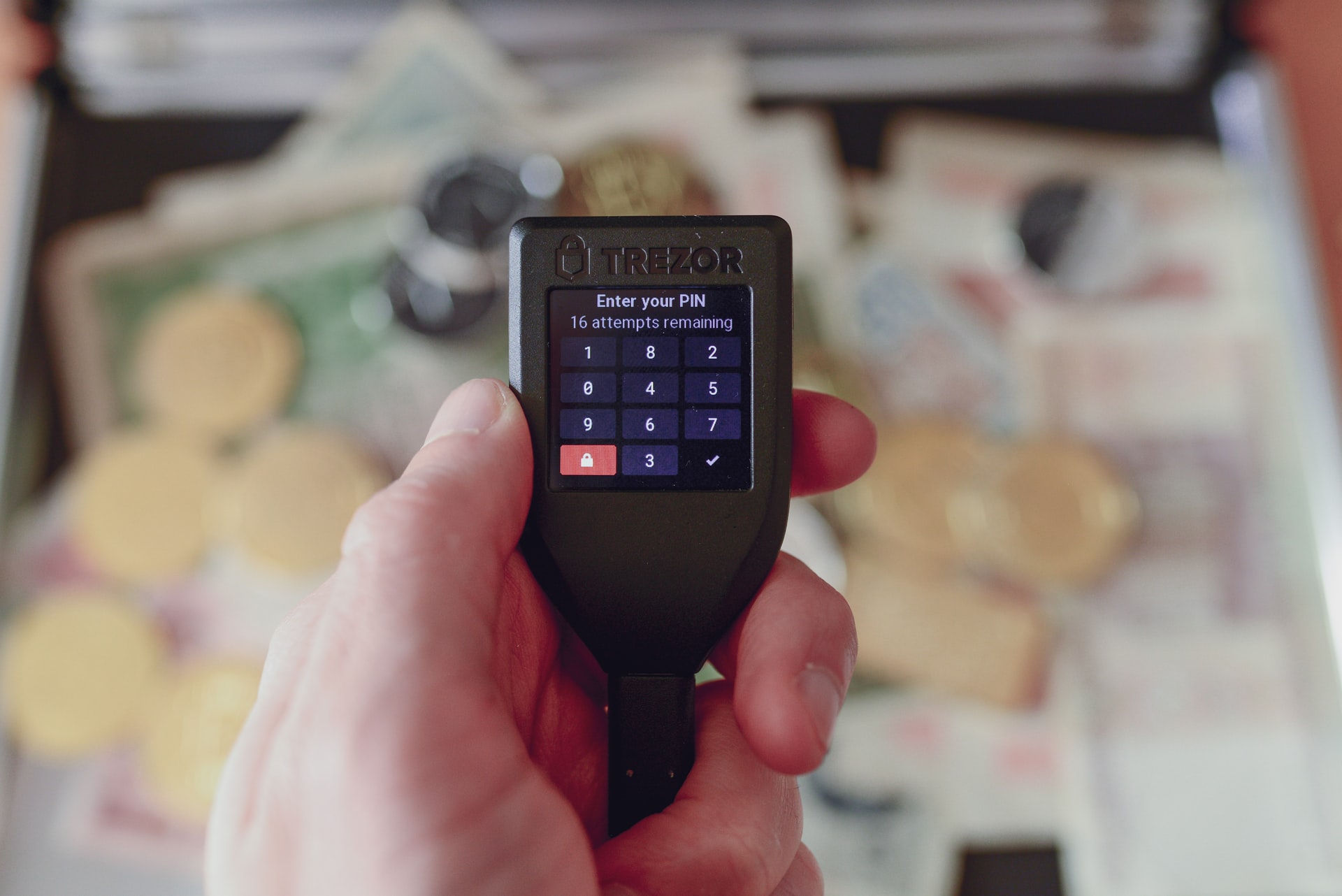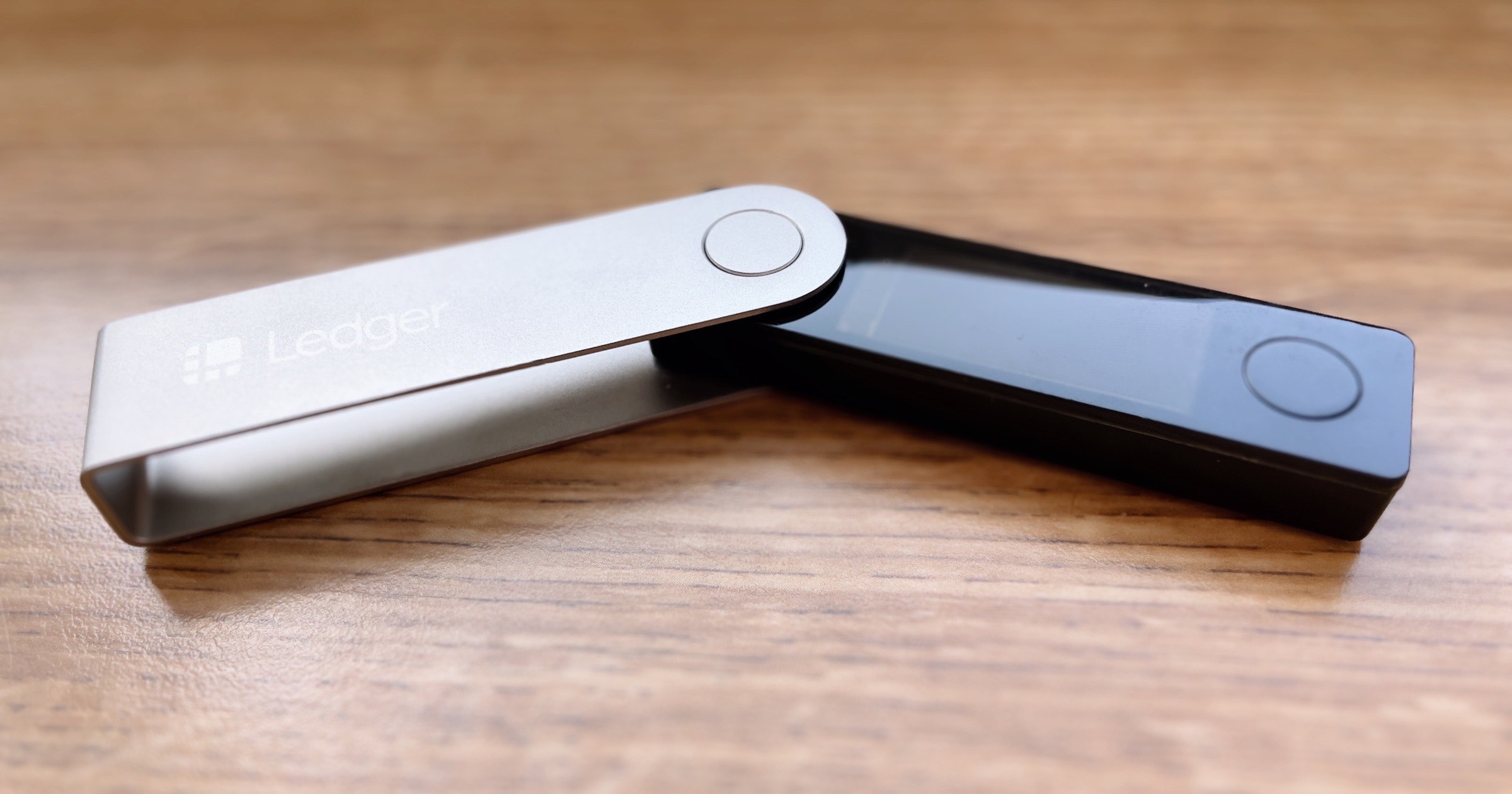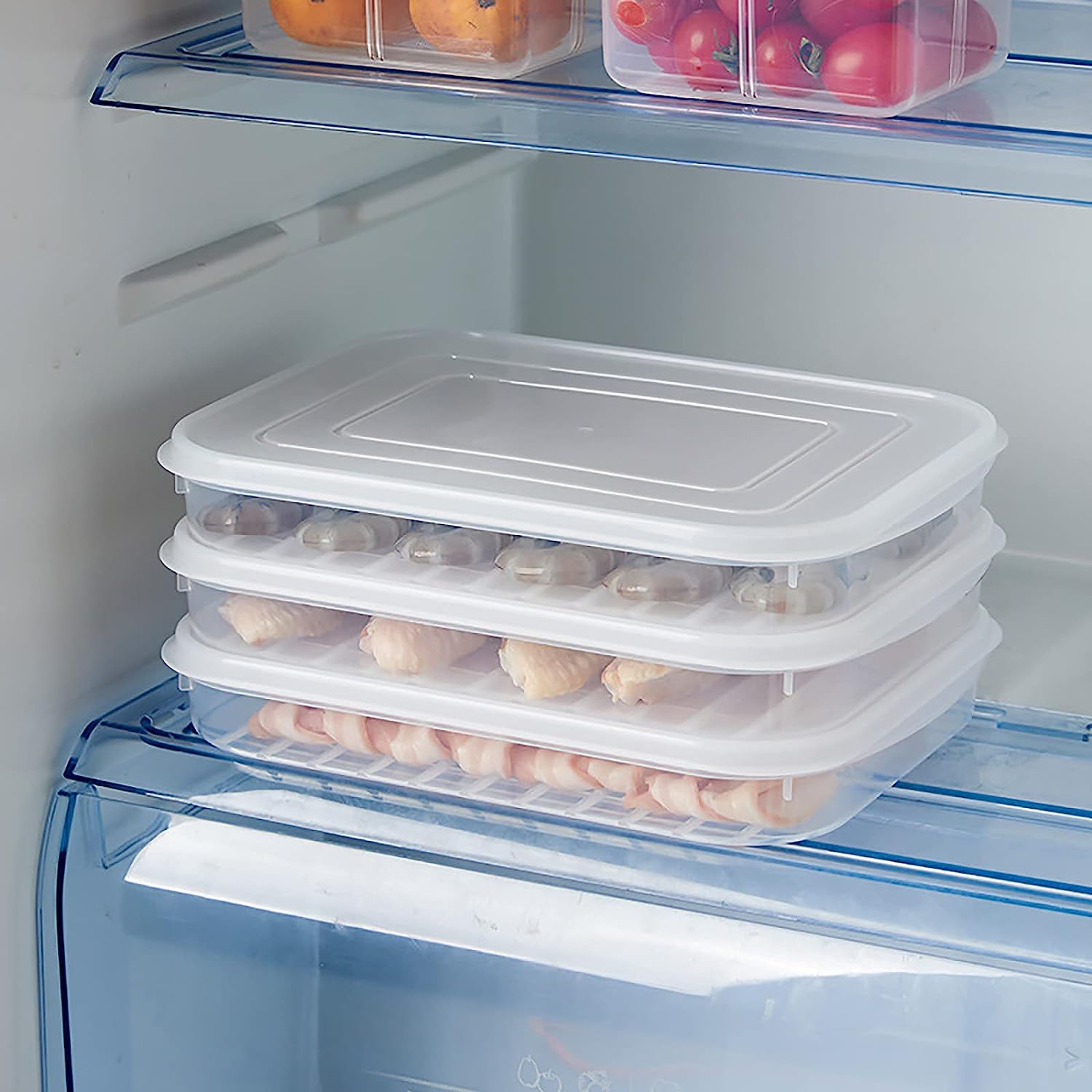

Articles
How To Store Crypto In Cold Storage
Modified: March 26, 2024
Learn how to store your cryptocurrencies in cold storage to ensure maximum security. Read our informative articles on the best practices for keeping your digital assets safe.
(Many of the links in this article redirect to a specific reviewed product. Your purchase of these products through affiliate links helps to generate commission for Storables.com, at no extra cost. Learn more)
Introduction
Welcome to the exciting world of cryptocurrency! Whether you’re a seasoned investor or just starting out, keeping your crypto assets secure is of utmost importance. With the increasing risks of online hacks and cyber theft, it’s crucial to understand the concept of cold storage and how it can safeguard your digital wealth.
So, what exactly is cold storage? In simple terms, it refers to storing cryptocurrencies offline, away from internet connectivity. Unlike hot wallets, which are connected to the internet, cold storage provides an extra layer of protection against online threats.
In this comprehensive guide, we’ll delve into the world of cold storage and explore its benefits, types, and how to create and secure your own cold storage wallet. Let’s get started.
Key Takeaways:
- Cold storage, such as paper wallets and hardware wallets, offers enhanced security and protection against online threats, making it a robust solution for safeguarding your cryptocurrency investments.
- Implementing additional security measures, such as multi-factor authentication, password management, and offline signatures, further enhances the safety and integrity of your cold storage solution, ensuring the protection of your digital assets.
Read more: How To Store Crypto
What is Cold Storage?
Cold storage, in the context of cryptocurrency, is the practice of safeguarding digital assets by storing them offline. It involves storing private keys or seed phrases in a secure physical location, disconnected from the internet. This offline storage method provides a high level of security against hacking attempts and cyber theft.
When you store your cryptocurrencies in a cold storage wallet, it is not accessible via the internet, making it virtually impenetrable to online attacks. This isolation from the online world ensures that your private keys cannot be hacked or compromised remotely.
One of the key principles behind cold storage is the concept of air-gapping. This means that the device or medium used for storing the cryptocurrencies is physically disconnected from any network. By eliminating the online connection, cold storage greatly minimizes the risk of unauthorized access and theft.
It’s important to note that cold storage is not limited to a specific type of device or medium. It can be implemented using various offline storage methods such as paper wallets, hardware wallets, and offline computers.
By employing cold storage, cryptocurrency holders can have peace of mind knowing that their digital assets are protected from cyber threats. Whether you’re a long-term hodler or an active trader, implementing cold storage is a wise decision to ensure the security and integrity of your crypto investments.
Benefits of Cold Storage
Implementing cold storage for your cryptocurrency holdings offers several key benefits that help protect your digital assets. Here are the top advantages of using cold storage:
- Enhanced Security: Cold storage is considered one of the most secure methods to store cryptocurrencies. By keeping your private keys offline and disconnected from the internet, you minimize the risk of hacking, malware attacks, and other cyber threats.
- Protection Against Online Attacks: Hackers continuously target online wallets and exchanges to steal users’ cryptocurrency holdings. With cold storage, your assets are shielded from these vulnerabilities as they remain offline and out of reach from potential attacks.
- Reduced Risk of Phishing Attempts: Phishing attacks are common in the crypto space, where scammers try to trick users into revealing their private keys or login credentials. Cold storage eliminates this risk since the private keys are offline and cannot be accessed remotely.
- Greater Control: Cold storage allows you to maintain full control over your private keys. You are not dependent on third-party services or online platforms to manage your assets. This control gives you the freedom and peace of mind that your cryptocurrencies are secure.
- Offline Backup: Cold storage serves as an excellent offline backup for your digital assets. In the event of a computer crash or hardware failure, you can easily retrieve your cryptocurrencies using your cold storage wallet.
- Long-Term Storage: Cold storage is particularly useful for long-term storage of cryptocurrencies. If you plan to hold your investments for an extended period, keeping them offline ensures their safety over time.
By leveraging these benefits, cold storage offers a robust solution to address security concerns and protect your cryptocurrency holdings from potential threats in the digital world. Implementing cold storage should be an essential part of any crypto investor’s security strategy.
Types of Cold Storage
When it comes to cold storage for cryptocurrencies, there are several types of offline storage methods available. Let’s explore the most commonly used types:
- Paper Wallets: A paper wallet is a physical printout or handwritten copy of your private keys and public addresses. It involves generating a wallet address and its corresponding private key offline, typically using a reliable online service or an offline computer. The private keys and addresses are then printed or written down on a piece of paper and stored in a secure location. Paper wallets are highly secure as they are immune to cyber attacks. However, it’s crucial to ensure the physical safety and proper backup of the paper wallet to prevent loss or damage.
- Hardware Wallets: Hardware wallets are physical devices specifically designed for storing cryptocurrencies securely. These devices, such as ledger wallets or Trezor wallets, store private keys offline and require physical interaction for transactions. Hardware wallets offer excellent security features, including encryption, PIN protection, and even built-in screens for enhanced transaction verification. They are considered one of the most secure methods of cold storage due to the isolation of private keys within the device.
- Offline Computers: Another method of cold storage involves using dedicated offline computers to store and manage your cryptocurrencies. Offline computers are never connected to the internet, ensuring the isolation and security of your private keys. You can generate wallets, sign transactions, and manage your funds offline. However, this method requires technical expertise and careful consideration of security measures to prevent any potential vulnerabilities.
These are the primary types of cold storage used by cryptocurrency holders. Each method has its own advantages and considerations, so it’s important to choose the one that aligns with your security needs and technical abilities. Remember to thoroughly research and understand the chosen cold storage method to ensure the safe storage of your digital assets.
Paper Wallets
A paper wallet is a popular method of cold storage for cryptocurrencies. It involves generating a wallet address and the corresponding private key offline and then printing or writing them down on a physical piece of paper. This paper serves as the primary means of accessing and storing your cryptocurrencies securely.
Creating a paper wallet typically involves the following steps:
- Generate the Wallet: Begin by using a reliable offline tool or an offline computer to generate a new wallet address and its corresponding private key. This process ensures that the keys are created in a secure and isolated environment, away from any potential online threats.
- Print or Write Down the Keys: Once you have generated the wallet, you will need to print or manually write down the public address (the wallet address) and the private key on a physical piece of paper. It’s essential to use a printer or writing instrument that is not connected to the internet to ensure the security of the keys. Take extra care to avoid any errors or loss of access to the keys.
- Secure the Paper Wallet: After printing or writing down the keys, it’s crucial to store the paper wallet in a secure location. Consider using a fireproof safe, a safety deposit box, or other secure storage options. Protect the paper from damage or unauthorized access to prevent the loss or theft of your private keys.
Using a paper wallet for cold storage offers several advantages. Firstly, paper wallets are offline, meaning they are not susceptible to online hacking attempts or malware attacks. Secondly, paper wallets provide full control over your private keys, allowing you to maintain complete ownership and security of your digital assets. Additionally, paper wallets are relatively easy to create and require minimal technical knowledge.
However, it’s important to be aware of some notable considerations when using paper wallets. Firstly, paper can degrade over time, making it important to keep multiple copies and periodically update your paper wallets. Secondly, you need to be cautious about the security of the physical paper itself, ensuring its protection from theft, damage, or loss. Finally, it’s vital to practice proper backup procedures, such as creating duplicate paper wallets and securely storing them in different locations.
By understanding the process and considerations involved in using paper wallets, you can leverage this cold storage method to secure your cryptocurrencies in an offline and reliable manner.
Read more: How To Store Crypto Offline
Hardware Wallets
Hardware wallets are physical devices specifically designed for cold storage of cryptocurrencies. These devices provide an advanced level of security by keeping your private keys offline and isolated from potential online threats.
Using a hardware wallet typically involves the following steps:
- Obtain a Hardware Wallet: Purchase a reputable hardware wallet device from a trusted manufacturer. Popular hardware wallet brands include Ledger and Trezor. Make sure to purchase from official sources to avoid counterfeit or tampered devices.
- Set up the Wallet: Connect the hardware wallet to your computer or mobile device using a USB cable or Bluetooth. Follow the instructions provided by the wallet manufacturer to set up the device and initialize the wallet.
- Generate and Secure the Recovery Seed: During the setup process, the hardware wallet will generate a unique recovery seed, which is a series of random words. Write down this recovery seed on a piece of paper and keep it in a secure location. This recovery seed is crucial for restoring your wallet in case the hardware wallet is lost, stolen, or damaged.
- Manage and Secure Your Cryptocurrencies: Once the hardware wallet is set up, you can use the wallet’s software or compatible third-party applications to manage your cryptocurrencies. You can easily view your balances, send and receive transactions, and even sign transactions securely using the private keys stored within the hardware wallet.
Hardware wallets offer several advantages for cold storage:
- Enhanced Security: Hardware wallets provide a secure environment for storing your private keys. The keys are safeguarded within the device and never exposed to the computer or online platform you connect it to. This isolates the keys from potential malware or hacking attempts.
- User-Friendly Interface: Hardware wallets often come with user-friendly interfaces and clear instructions, making them accessible to both technical and non-technical users.
- Extra Security Features: Hardware wallets offer additional security features, such as built-in screens that display transaction details for enhanced verification. Some devices also support PIN codes or biometric authentication for added protection.
- Compatibility: Hardware wallets are commonly compatible with various cryptocurrencies, allowing you to securely store multiple digital assets in one device.
While hardware wallets provide excellent security, it’s important to remember that they are physical devices and susceptible to damage, loss, or theft. Therefore, it’s crucial to backup the recovery seed and store it in a separate secure location. Additionally, ensure that you only purchase hardware wallets from reputable sources to avoid counterfeit or compromised devices.
By leveraging the advanced security features of hardware wallets, you can confidently store and manage your cryptocurrencies offline, minimizing the risk of unauthorized access and protecting your digital assets.
When setting up cold storage for your crypto, consider using a hardware wallet like Ledger or Trezor for added security against online threats.
Creating and Securing a Cold Storage Wallet
Creating and securing a cold storage wallet is essential to ensure the safety and integrity of your digital assets. Here are the steps to create and secure a cold storage wallet:
- Choose a Cold Storage Method: Select the cold storage method that best suits your needs and technical abilities. Paper wallets and hardware wallets are two popular options to consider.
- Follow the Instructions: If you choose a paper wallet, use a reputable offline tool or an offline computer to generate a new wallet address and its corresponding private key. Print or write down the keys on a physical piece of paper. If you opt for a hardware wallet, purchase the device from a trusted source and follow the setup instructions provided by the manufacturer.
- Backup Your Wallet: Create a backup of your cold storage wallet. For paper wallets, make copies and store them in secure locations, ensuring proper protection from physical damage and unauthorized access. For hardware wallets, carefully record and store the recovery seed offline in a separate place from the device itself.
- Implement Additional Security Measures: Enhance the security of your cold storage wallet by following best practices. This may include using a strong, unique password to access your wallet software or firmware, encrypting the backup of your wallet if applicable, and enabling two-factor authentication (2FA) for added protection.
- Test Your Wallet: Before transferring a significant amount of cryptocurrency to your cold storage wallet, conduct a small test transaction to ensure that the entire process is functioning correctly. This will help you verify that you have the necessary information and can access your funds securely.
When it comes to securing your cold storage wallet, there are a few key considerations:
- Physical Security: Keep your paper wallet or hardware wallet in a secure location that is protected from theft, damage, or unauthorized access.
- Backup Strategy: Ensure you have multiple backups of your wallet and recovery seed. Store backups in separate physical locations to mitigate the risk of loss.
- Regular Checks: Periodically check your cold storage wallet for signs of physical degradation or damage. Replace paper wallets with new ones if necessary, and regularly update and test your hardware wallet firmware.
- Keep Software Up-to-Date: If you are using software associated with your cold storage wallet (such as a wallet manager for a hardware wallet), be sure to keep it updated with the latest security patches and versions.
By following these steps and implementing proper security measures, you can create and secure your cold storage wallet effectively, keeping your cryptocurrencies safe from online threats.
Transferring Cryptocurrency to Cold Storage
Transferring your cryptocurrency to cold storage is the crucial step that ensures your digital assets are securely stored offline. To transfer your crypto to cold storage, follow these steps:
- Ensure Your Cold Storage Wallet is Set Up: Make sure your paper wallet is generated and properly stored or that your hardware wallet is set up according to the manufacturer’s instructions.
- Access Your Sending Wallet or Exchange Account: Log in to the wallet or exchange account where your cryptocurrency is currently stored.
- Select the Cryptocurrency to Transfer: Choose the specific cryptocurrency you want to transfer to your cold storage wallet. Ensure you select the correct token or coin to avoid any mistakes.
- Enter the Recipient Address: In your sending wallet or exchange account, find the option to send or withdraw funds. Enter the wallet address of your cold storage wallet as the recipient address. Double-check the address to ensure accuracy, as any mistakes could result in lost funds.
- Set the Transfer Amount: Specify the amount of cryptocurrency you wish to transfer to your cold storage wallet. Take into consideration any transaction fees associated with the transfer.
- Review and Confirm: Review all the details of the transfer, including the recipient address, amount, and transaction fees. Once you are certain everything is correct, confirm the transaction.
- Wait for Confirmation: Depending on the blockchain network and its current congestion, you may need to wait for a certain number of confirmations before the transfer is considered complete. This process ensures the transaction is embedded in the blockchain and irreversible.
- Verify the Transfer: Use blockchain explorers or other tools to verify that the transfer has been successfully completed and that the cryptocurrency has arrived in your cold storage wallet.
It’s important to exercise caution and attention to detail when transferring cryptocurrency to cold storage. Take note of the following considerations:
- Accuracy: Double-check the recipient address before confirming the transfer. Mistakenly sending cryptocurrency to the wrong address may result in permanent loss.
- Transaction Fees: Understand and account for any transaction fees associated with the transfer. These fees vary depending on network congestion and the cryptocurrency being transferred.
- Confirmation Time: Blockchain confirmation times can vary, so be patient and allow enough time for the transfer to be fully confirmed and reflected in your cold storage wallet.
- Record Keeping: Maintain a record of the transaction details, including the date, time, amount, and relevant blockchain explorer links. This documentation can be useful for future reference or auditing purposes.
By following these steps and considerations, you can securely transfer your cryptocurrency to cold storage, ensuring it is safely stored offline and protected from online threats.
Additional Security Measures
While cold storage provides a strong layer of protection for your cryptocurrencies, it’s important to implement additional security measures to further enhance the safeguarding of your digital assets. Here are some recommended security measures to consider:
- Multi-factor Authentication (MFA): Enable MFA for all your online accounts and wallets associated with your cryptocurrencies. MFA adds an extra layer of security by requiring an additional verification step, such as a code from a mobile app or a physical security key.
- Password Management: Use a reputable password manager to generate and store strong, unique passwords for your wallets, accounts, and exchanges. Avoid reusing passwords across different platforms to minimize the risk of a single breach compromising multiple accounts.
- Offline Signature: For advanced users, consider using an offline signature to sign transactions. This involves generating the transaction details offline and signing them with your private key using an offline device. This method ensures that your private keys are never exposed to online devices.
- Secure Network: Ensure you are operating on a secure and trusted network when accessing your online wallets or exchanges. Avoid using public Wi-Fi networks, as they can be vulnerable to attacks.
- Regular Software Updates: Keep your operating system, wallet software, and security software up to date to benefit from the latest patches and security enhancements.
- Avoid Suspicious Links and Phishing Attempts: Be cautious of phishing attempts and malicious links that impersonate legitimate websites or wallets. Avoid clicking on suspicious links and only use official sources and verified applications.
- Monitor Your Accounts: Regularly monitor your wallets and exchange accounts for any suspicious activity. Enable account activity notifications and promptly report any unauthorized access or suspicious transactions.
- Consider a Safe Deposit Box: For extra physical security, you may consider storing your paper wallets or hardware wallets in a secure bank safe deposit box.
Implementing these additional security measures adds additional layers of protection to your cold storage solution, ensuring the safety and integrity of your cryptocurrencies. Remember, security is an ongoing process, and it is essential to stay vigilant, follow best practices, and adapt to new threats and security advancements in the cryptocurrency space.
Read more: How To Store Crypto On A Usb
Accessing and Managing Cold Storage
Accessing and managing your cold storage wallet requires careful consideration and adherence to best practices to ensure the security of your cryptocurrencies. Here are some key steps to effectively access and manage your cold storage:
- Keep Your Cold Storage Device Offline: Ensure that your cold storage device, whether it’s a paper wallet or a hardware wallet, remains disconnected from the internet at all times. This isolation minimizes the risk of online attacks and unauthorized access to your private keys.
- Connect Cold Storage for Transactions: When you need to perform a transaction or access your cryptocurrencies, connect your cold storage device to a trusted and secure computer or mobile device. Be cautious about the system you use, ensuring it is not compromised by malware or keyloggers.
- Follow the Workflow: Each type of cold storage wallet has its own workflow for accessing and managing your cryptocurrencies. Familiarize yourself with the instructions provided by the wallet manufacturer or the specific steps needed for your chosen cold storage method.
- Enter Verification Details: Depending on your cold storage device, you may need to enter a PIN code, passphrase, or provide other forms of verification to access your cryptocurrencies. Follow the device’s instructions carefully to enter the required details accurately.
- Execute Transactions Carefully: When sending or receiving funds from your cold storage wallet, double-check the recipient address and transaction details before confirming the transaction. It’s crucial to ensure accuracy to avoid any irreversible errors.
- Keep Software Up-to-Date: If you are using any software associated with your cold storage device, such as a wallet manager, ensure it is regularly updated with the latest security patches and versions. This helps maintain compatibility and protects against any known vulnerabilities.
- Monitor Confirmation Status: After executing a transaction from your cold storage wallet, monitor the blockchain for confirmation of the transaction. Depending on network congestion, it may take some time for the transaction to be confirmed and reflected in the blockchain explorer.
- Securely Disconnect Your Cold Storage: Once you have completed your transactions or management tasks, securely disconnect your cold storage device from the computer or mobile device. Ensure that it remains offline and stored safely until the next time you need to access it.
Remember, accessing and managing your cold storage requires a careful balance between security and convenience. Always prioritize the security of your private keys and take necessary precautions to prevent unauthorized access to your cryptocurrencies.
Risks and Considerations
While cold storage is generally considered one of the most secure methods for storing cryptocurrencies, it’s important to be aware of the potential risks and considerations associated with this storage approach. Understanding these risks will allow you to take appropriate precautions and make informed decisions regarding the management of your digital assets. Here are some key factors to consider:
- Human Error: The risk of human error cannot be overlooked. Mistakenly writing down an incorrect private key or losing access to the recovery seed for a paper wallet can result in permanent loss of your cryptocurrencies. Always double-check information, follow instructions carefully, and keep multiple backups in separate secure locations.
- Physical Damage or Loss: Physical items like paper wallets or hardware wallets can be susceptible to damage or loss. Fire, water damage, theft, or misplacement of these items can lead to the irrevocable loss of your private keys. Implement proper storage and backup strategies to mitigate such risks.
- Compatibility and Software Risks: Some cold storage devices may have compatibility issues with certain cryptocurrencies or wallet software. It’s essential to ensure compatibility and update your software and firmware regularly to mitigate any potential vulnerabilities or security risks.
- Social Engineering and Phishing: Hackers and scammers may attempt social engineering attacks or phishing attempts to gain access to your cold storage wallet information. Always be cautious of suspicious links, never share your private keys or recovery seed with anyone, and verify the authenticity of any communication or instructions received.
- Emerging Technological Risks: The field of cryptocurrency security is continually evolving, and new risks and vulnerabilities may emerge. Stay informed about the latest security practices, technological advancements, and potential threats to ensure the ongoing security of your cold storage solution.
- Loss of Access: Failure to maintain proper backups or losing access to your cold storage wallet’s private keys or recovery seed can result in permanent loss of your cryptocurrencies. It’s important to have redundancy in backup methods and consider estate planning to ensure smooth access for your loved ones in case of unforeseen events.
It’s crucial to weigh these risks and considerations against the benefits of cold storage. By taking the necessary precautions, implementing proper security practices, and staying vigilant, you can mitigate many of these risks and confidently store your cryptocurrencies in cold storage.
Conclusion
Securing your cryptocurrency investments is paramount in today’s digital world. Cold storage provides a robust solution to protect your digital assets from online threats, ensuring that you have control and peace of mind over your cryptocurrencies.
In this comprehensive guide, we explored the concept of cold storage and its various types, such as paper wallets and hardware wallets. We discussed the steps involved in creating and securing a cold storage wallet, as well as how to transfer cryptocurrency to cold storage. We also highlighted additional security measures and considerations to keep in mind to further enhance the safety of your digital assets.
While cold storage provides a high level of security, it’s essential to remain vigilant and proactive in safeguarding your cryptocurrencies. Regularly update your software, be cautious of phishing attempts, and follow best practices in password management and account security.
Remember, the keys to successful cold storage are careful planning, proper backup procedures, and adherence to security measures. By implementing cold storage and taking the necessary precautions, you can significantly reduce the risk of online attacks, theft, and loss of your valuable cryptocurrencies.
Be sure to stay informed about emerging security practices and evolving threats to continuously adapt your cold storage strategy to the changing landscape of the cryptocurrency world.
Start securing your digital assets today and benefit from the peace of mind that comes with knowing your cryptocurrencies are safe and protected in cold storage.
Frequently Asked Questions about How To Store Crypto In Cold Storage
Was this page helpful?
At Storables.com, we guarantee accurate and reliable information. Our content, validated by Expert Board Contributors, is crafted following stringent Editorial Policies. We're committed to providing you with well-researched, expert-backed insights for all your informational needs.














0 thoughts on “How To Store Crypto In Cold Storage”